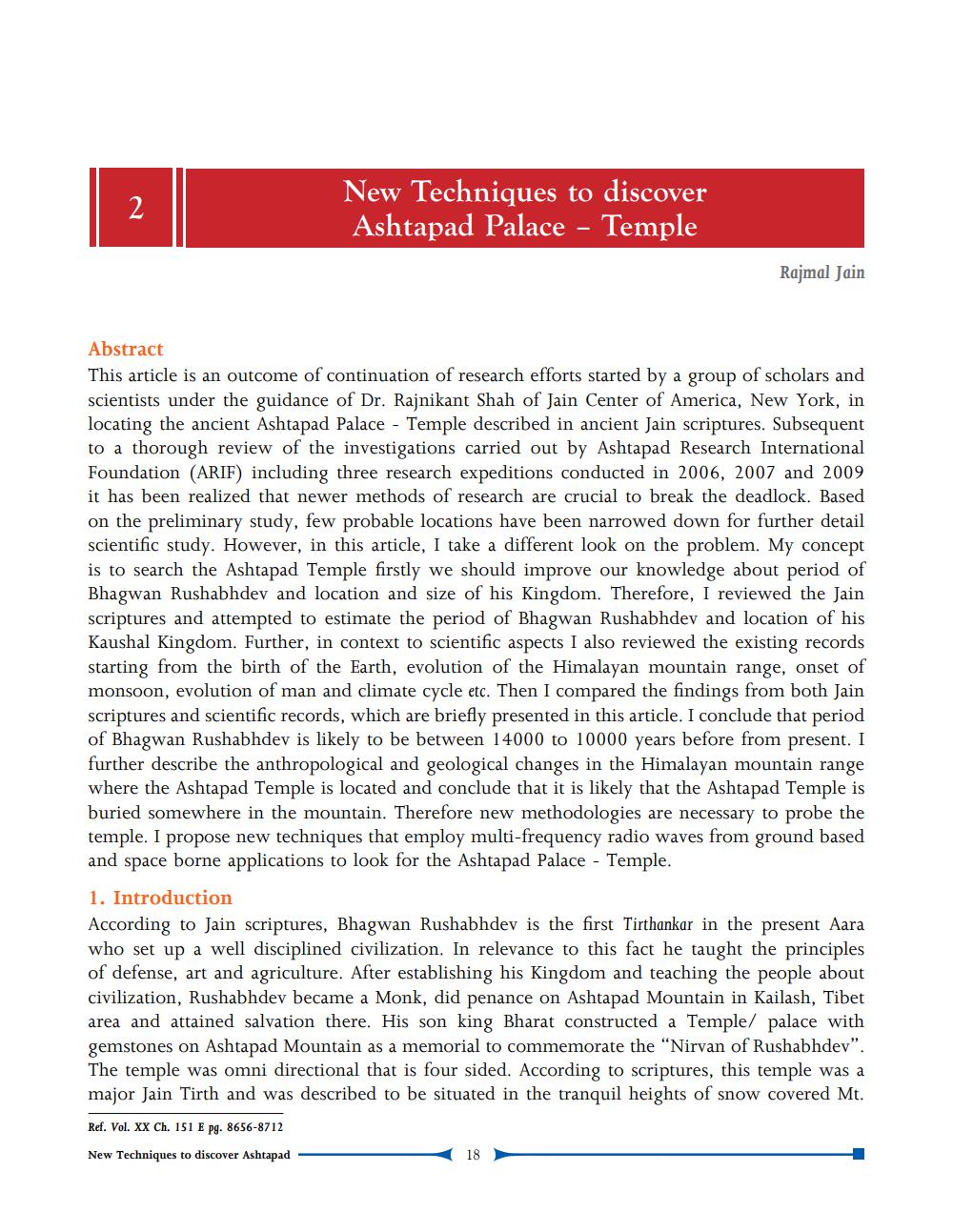________________
New Techniques to discover Ashtapad Palace - Temple
Rajmal Jain
Abstract This article is an outcome of continuation of research efforts started by a group of scholars and scientists under the guidance of Dr. Rajnikant Shah of Jain Center of America, New York, in locating the ancient Ashtapad Palace - Temple described in ancient Jain scriptures. Subsequent to a thorough review of the investigations carried out by Ashtapad Research International Foundation (ARIF) including three research expeditions conducted in 2006, 2007 and 2009 it has been realized that newer methods of research are crucial to break the deadlock. Based on the preliminary study, few probable locations have been narrowed down for further detail scientific study. However, in this article, I take a different look on the problem. My concept is to search the Ashtapad Temple firstly we should improve our knowledge about period of Bhagwan Rushabhdev and location and size of his Kingdom. Therefore, I reviewed the Jain scriptures and attempted to estimate the period of Bhagwan Rushabhdev and location of his Kaushal Kingdom. Further, in context to scientific aspects I also reviewed the existing records starting from the birth of the Earth, evolution of the Himalayan mountain range, onset of monsoon, evolution of man and climate cycle etc. Then I compared the findings from both Jain scriptures and scientific records, which are briefly presented in this article. I conclude that period of Bhagwan Rushabhdev is likely to be between 14000 to 10000 years before from present. I further describe the anthropological and geological changes in the Himalayan mountain range where the Ashtapad Temple is located and conclude that it is likely that the Ashtapad Temple is buried somewhere in the mountain. Therefore new methodologies are necessary to probe the temple. I propose new techniques that employ multi-frequency radio waves from ground based and space borne applications to look for the Ashtapad Palace - Temple.
1. Introduction According to Jain scriptures, Bhagwan Rushabhdev is the first Tirthankar in the present Aara who set up a well disciplined civilization. In relevance to this fact he taught the principles of defense, art and agriculture. After establishing his Kingdom and teaching the people about civilization, Rushabhdev became a Monk, did penance on Ashtapad Mountain in Kailash, Tibet area and attained salvation there. His son king Bharat constructed a Temple/ palace with gemstones on Ashtapad Mountain as a memorial to commemorate the "Nirvan of Rushabhdev". The temple was omni directional that is four sided. According to scriptures, this temple was a major Jain Tirth and was described to be situated in the tranquil heights of snow covered Mt.
Ref. Vol. XX Ch. 151 E pg. 8656-8712
New Techniques to discover Ashtapad
18




